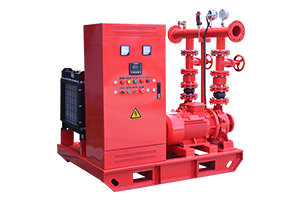How to Choose the Right Fire Fighting Pump for Your Building?
Nov 22, 2024
Share:
Choosing the right fire-fighting pump for your building is critical for ensuring safety and compliance with local regulations. Here's a step-by-step guide to help you make the right choice:

1. Understand Your Building's Fire Safety Requirements
- Building Type: Residential, commercial, industrial, or high-rise? The pump type and capacity will vary based on the building's purpose and size.
- Fire Hazard Level: High-risk areas like chemical plants require more robust systems.
2. Comply with Local and International Standards
- Follow standards such as NFPA 20 (National Fire Protection Association) or UL/FM certifications to ensure compliance.
- Check local fire codes and insurance requirements for specific guidelines.
3. Determine System Flow and Pressure Needs
- Conduct a hydraulic analysis to calculate:
- Flow rate: Gallons per minute (GPM) required to suppress fires effectively.
- Pressure: Head pressure (measured in PSI or meters) to ensure the system reaches all critical points.
4. Choose the Right Pump Type
- Electric Fire Pumps: Reliable, easy to maintain, suitable for buildings with stable power supply.
- Diesel Fire Pumps: Ideal for locations with unreliable power supply; provides backup for electric pumps.
- Jockey Pumps: Maintain system pressure and prevent false activations of the main pump.
5. Consider the Source of Water Supply
- Pumps should match the available water supply type:
- Tank-fed: Often found in high-rises.
- Municipal supply: Ensure pump compatibility with fluctuating pressure.
- Open water sources: Requires robust suction capabilities.
6. Account for the Building's Height and Layout
- For high-rise buildings, select pumps with higher pressure capabilities to ensure water reaches the top floors.
- For large warehouses, ensure sufficient flow to cover wide areas.
7. Evaluate Reliability and Maintenance
- Choose pumps from reputable brands or manufacturers (e.g., UL-listed pumps) known for durability and easy maintenance.
- Factor in local availability of spare parts and skilled technicians.
8. Plan for Backup Systems
- Include redundant pumps (electric + diesel) or parallel systems for added safety.
9. Consult Experts
- Work with fire safety consultants or pump manufacturers to ensure your system is properly designed and installed.
10. Budget and Longevity
- Invest in high-quality pumps to avoid frequent replacements or failures.
- Factor in total cost of ownership, including energy consumption and maintenance.






